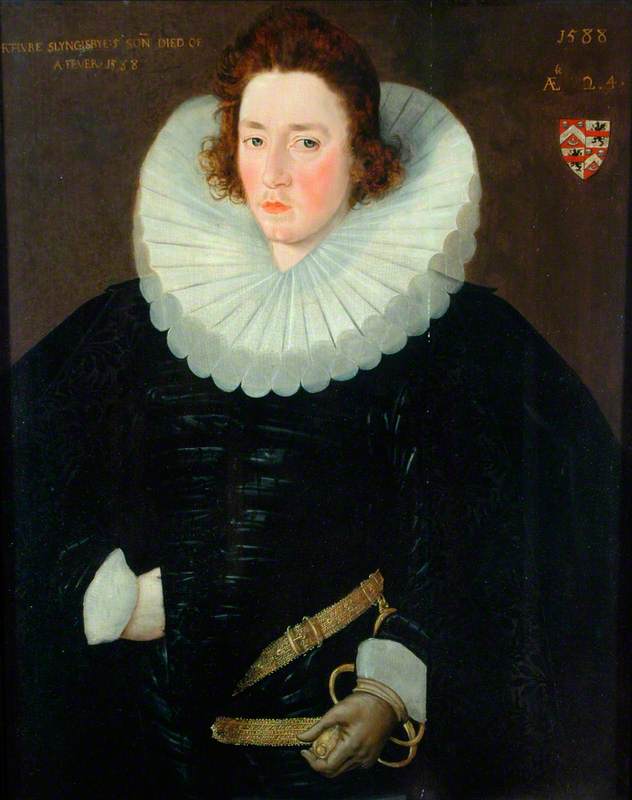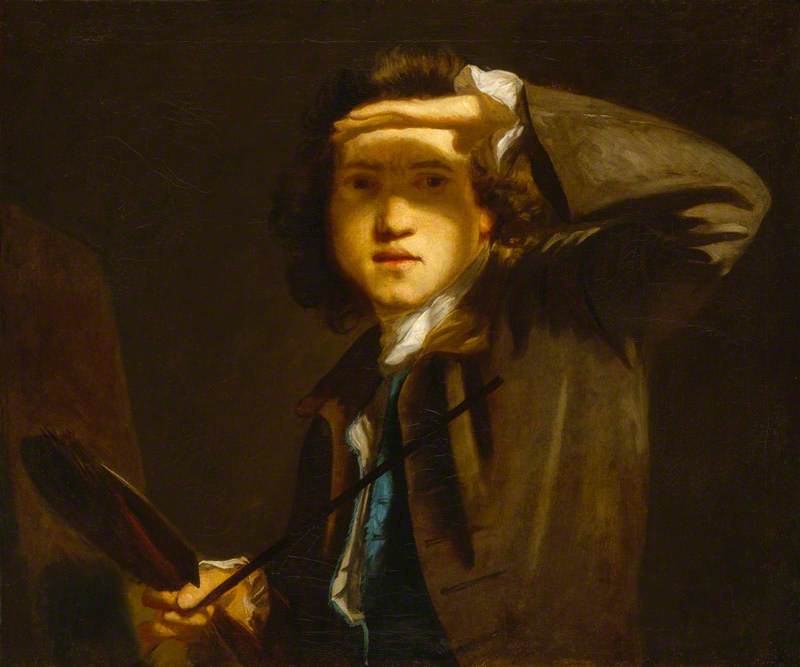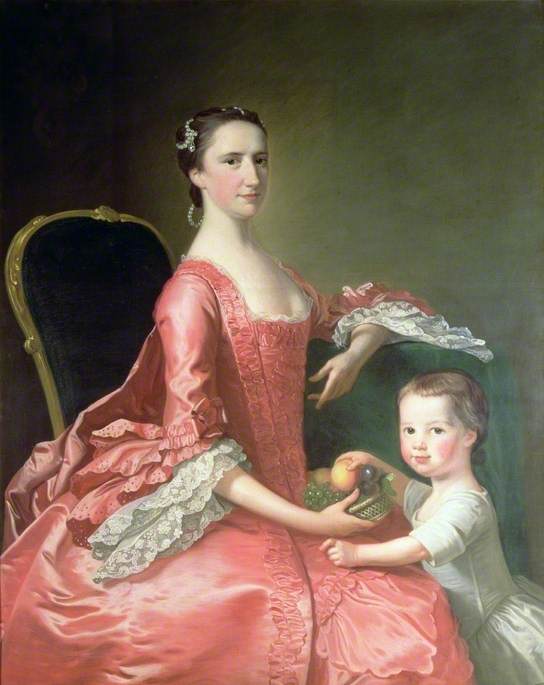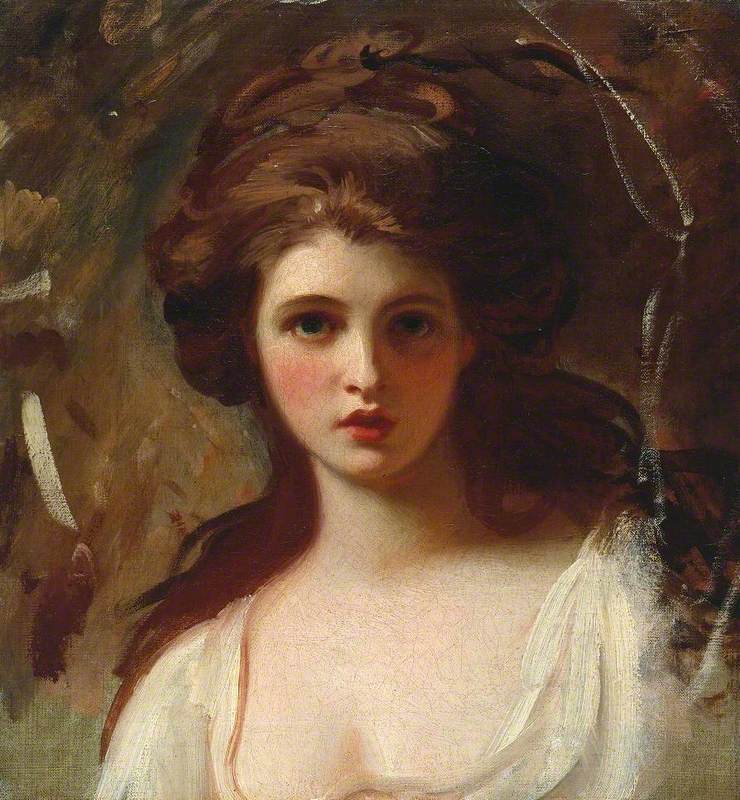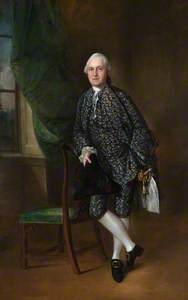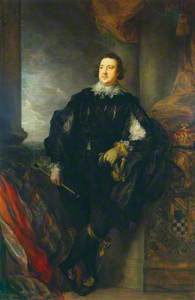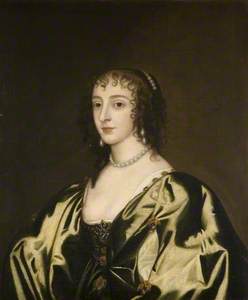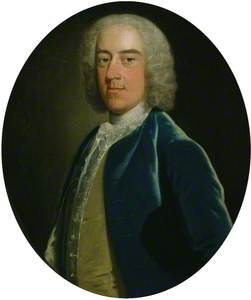What would you choose to wear if you were having your portrait painted? Nowadays, it's easy to snap (and delete and retake) a selfie, but in the past having your portrait painted was a time-consuming affair. It was also something you would probably only ever do once in your lifetime, so what you wore mattered. Should you go for a fashionable outfit, which expressed your wealth and good taste? Or would a more classical look better stand the test of time?
Many sitters in the eighteenth century faced this very dilemma. In 1771 the artist Thomas Gainsborough (1727–1788) wrote to the Earl of Dartmouth that he was 'very well aware of the Objection to modern Dresses in Pictures, that they are soon out of fashion & look awkward'. Some went ahead and wore contemporary fashions anyway, such as Sir Edward Turner, who was depicted by Gainsborough in 1762 wearing a suit made of a costly figured silk.
Sir Edward Turner, 2nd Bt of Ambrosden, Oxford (1719–1766)
1762
Thomas Gainsborough (1727–1788) 
Turner's full-length pose meant that not only was the floral pattern of his suit's fabric on display, but so too were his accessories – such as his lace cravat and cuffs, sword and gold shoe buckles – and the silk lining of his coat.
Other sitters, such as Charles Howard, chose a different approach, electing to be painted wearing fashions from the seventeenth-century court of Charles I rather than those of their own era. These older styles, instead of being consigned to history, had become relatively fashionable and popular once more in the mid-eighteenth century, at least in certain circumstances.
Charles Howard, 11th Duke of Norfolk
1784–1786
Thomas Gainsborough (1727–1788) 
Even the royal family was painted by Johann Zoffany (1733–1810) in outfits which imitated those worn by Charles I and his family in portraits by Anthony van Dyck (1599–1941) and his followers.
Charles I (1600–1649), and His Family
(after Anthony van Dyck)
Remee van Leemput (1607–1675) 
In the 1770s Sir Charles Holte, who had recently inherited a baronetcy after the death of his older brother Lister, commissioned Gainsborough to paint his portrait. Gainsborough was one of the most celebrated and sought-after portraitists of the day, and was then based in Bath, where Charles also spent a lot of time. Like many of his contemporaries, Charles chose to be painted wearing a slashed doublet and lace collar which were reminiscent of those worn in the 1630s.
There are several reasons for the popularity of what came to be known as 'Vandyke' dress in portraiture in the mid-eighteenth century. One reason was the influence of Van Dyck himself, whose work was much admired and imitated by eighteenth-century painters, such as Gainsborough.
Another was the prevalence of masked balls and masquerades, where attendees often wore fancy dress. The fashions of the court of Charles I formed the basis of many costumes at these events; Sir Watkin Williams-Wynn and his wife Henrietta were depicted in a portrait by Joshua Reynolds (1723–1792) both wearing 'Vandyke' dress and holding masks.
Sir Watkin Williams-Wynn (1749–1789), and Lady Henrietta Williams-Wynn (1748–1769)
1769
Joshua Reynolds (1723–1792) 
There was a growing awareness of and interest in history in the mid-eighteenth century, particularly the events of the previous century. The beheading of Charles I during the Civil Wars led to him being seen as a martyr, a romantic and tragic figure who captured the hearts and imaginations of many. As the historian Kevin Sharpe has commented: 'There can be little doubt that his manner of dying was the most popular thing Charles I ever did.'
Charles Holte's own reasons for having his portrait painted wearing 'Vandyke' dress may also relate to his family's history. His great-great-great grandfather, Sir Thomas Holte, supported the Royalist cause during the Civil Wars, and the king himself spent a night at the family's home, Aston Hall in Birmingham, just a few days before the Battle of Edgehill. In December 1643, Aston Hall was besieged by Parliamentarian forces for three days then plundered, the house left in disarray and devoid of much of its furniture.
Despite this traumatic incident – which has left its mark on Aston Hall in the form of a hole from a cannonball in the main staircase – later generations of the Holte family sought to commemorate their ancestors' connections to Charles I, not least by renaming the room where he had slept the 'Kings Chamber', and displaying portraits there of Charles and his queen, Henrietta Maria, which are still exhibited in the same room at Aston Hall today.
Queen Henrietta Maria (1609–1669)
c.1750–1770
Anthony van Dyck (1599–1641) (after) 
Under the terms of his brother's will, Charles Holte was denied the use of Aston Hall until after his sister-in-law's death. But though he was unable to live in his ancestral home, Charles could still express kinship with his ancestors by being painted in 'Vandyke' dress. His brother Lister had similarly donned a doublet in the 1760s for a portrait by Tilly Kettle (1735–1786), now thought to be in private ownership, but a second anonymous portrait shows him wearing the fashions of his own age.
Sir Lister Holte (1720–1770), 5th Bt of Aston Hall
mid-18th C
British School 
The seventeenth-century dress that eighteenth-century sitters wore for their portraits was not always historically accurate. Charles Holte, for instance, paired his 1630s style doublet and collar with a modern wig. He probably didn't own this doublet; it was neither a family heirloom nor a garment made for him. Rather, it seems likely that it belonged to Gainsborough and was one of his studio props, as art historians have noted its similarity to the outfits which Archibald Hamilton and the 'Blue Boy' wore in their own portraits by Gainsborough.
Lord Archibald Hamilton (1770–1827)
1786
Thomas Gainsborough (1727–1788) 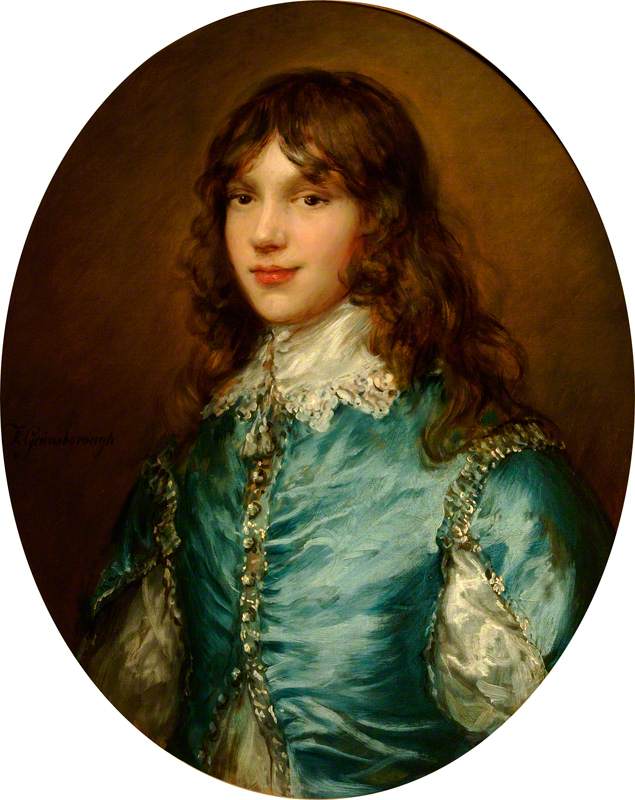
Portraits cannot always be read as an accurate record of the wardrobe, environs, and even the true appearance of a sitter. But while the use of 'Vandyke' dress in some mid-eighteenth-century portraits gives a false impression of what most people were wearing on a daily basis in that period, it can tell us about the popularity of fancy dress, the relationship people had to history, and the way that clothes could be used to express a connection to one's family and ancestors.
Rebecca Unsworth, Assistant Curator of Decorative Art at Birmingham Museums Trust




